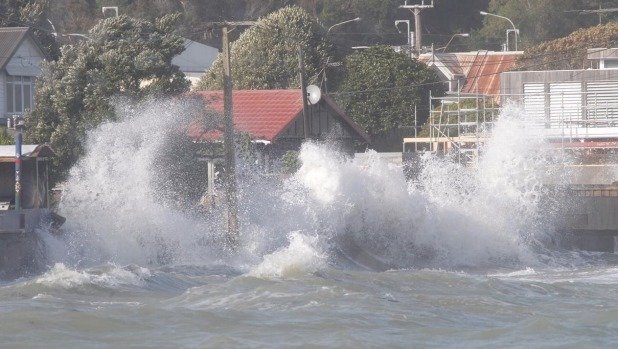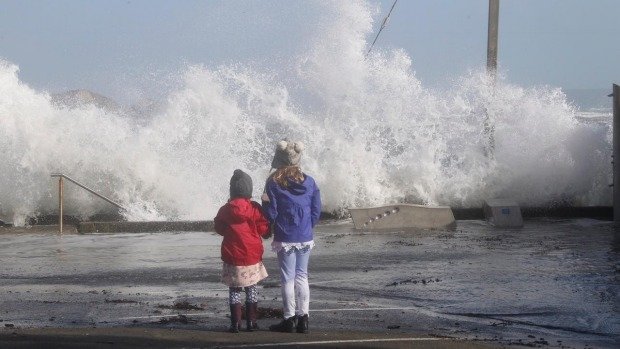
Parts of the Porirua coast, including a section of Steyne Avenue, were hammered by the sea on Sunday.
State Highway 58 between Joseph Banks Drive and Spinnaker Drive as well as Grays Rd reopened about 4.30pm on Sunday, after being closed in the middle of the day due to rising sea levels.
At the time a New Zealand Transport Agency spokeswoman said the combination of high tides and storm conditions had made the road conditions unsafe.
Two Porirua roads were also closed for four hours overnight on Saturday because waves were washing over them.
In the Porirua suburb of Plimmerton, 10 metres of a seawall had been washed away and water was lapping at the doors of the Plimmerton Fire Station, which backs on to the beach.
Chief fire officer Carl Mills said it had been an exceptional storm.
The Porirua City Council had taken sandbags to the station, to protect its back doors from the encroaching ocean.
On Sunday evening council contractors placed 13 1.5 tonne concrete blocks between the sea and the station, to act as a temporary seawall.
Six months earlier there had been sand dunes around the back of the station, but those had all been eroded away, leaving the building exposed.
Mills said the last time the seawall had been compromised was during the June 2013 winter storm, but this time a bigger section was damaged.
He expected it would take at least six months for the damaged section of sea wall to be replaced.
No other buildings were at threat from the high sea.
Further up the road on the Kapiti Coast, up to four metres of land disappeared from the back of Ben Bowie's family beach house in Paraparaumu between Saturday and Sunday.
Bowie filmed waves smashing at the coast, near in Raeburn Lane, leaving the beach access stairs surrounded by debris and rough seas.
"Last week the land went up to the stairs. This has been an issue for a couple of years now so we built a seawall a few years back."
Fire service kept busy
The Fire Service responded to several weather related calls overnight in the Wellington region, central communications shift manager David Meikle said.
"We had a number of weather-related calls and there were half a dozen minor things this morning, trees down, that sort of thing, over the East Coast and in Wellington."
A trampoline in Upper Hutt had to be secured to the ground after it blew into a house about 3.30am, he said.
#Hurricanes game, with the weather to match. Weather forecast + seat selection = success #Wellington
pic.twitter.com/ypyfcsarnh
— Juliet Sefton (@JuniSEF) July 23, 2016
Jeez, thought my house was gunna relocate to the kapiti area for a bit then. #WellyWind
— Allan Buxton (@RamjamNZ) July 23, 2016
Got the wind and the rain and the Hurricanes, Wellington is wonderful #HURvSHAThe MetService said wind gusts peaked at 107kmh in Wellington overnight on Saturday.
— Chris (@Lukeurmyson) July 23, 2016
Close to 9mm of rain fell in Porirua while 13mm fell at Kelburn in Wellington.
Another 5mm of rain is expected on Sunday afternoon for Wellington city, with northwesterly gusts up to 100kmh.
A warning for severe gale northwesterlies remains in place for Wellington, Wairarapa, the Marlborough Sounds and Chatham Islands.
These winds have the potential to be damaging to trees, powerlines and unsecured structures and make for hazardous driving conditions, especially for tall sided vehicles and motorcycles.
Heavy swells and large waves are also expected along western coastlines and may cause erosion in vulnerable areas while making driving conditions hazardous about low-lying coastal roads.




Reader Comments
to our Newsletter